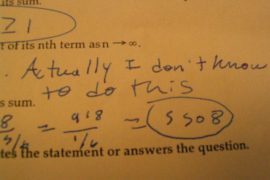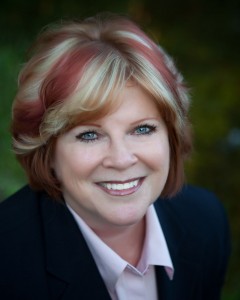Last Friday, my family adopted a sweet, little poodle puppy, named Zipper. The foster mother, Sally, had brought him from a Mexico shelter to her own home in Silver Springs, Md. During the home visit on Friday, we talked about our careers, and I mentioned that I write about math. That’s when she told me about her neighbor, the mathematician and novelist.
“You two should meet!” she said. Apparently, we have some of the same ideas about math.
Well, I did “meet” Manil Suri today, via the pages of the New York Times op-ed section. His excellent piece, “How to Fall in Love with Math” points out some ideas I’ve been extolling for years — along with a couple that I might have said were hogwash a couple of weeks ago.
As a mathematician, I can attest that my field is really about ideas above anything else. Ideas that inform our existence, that permeate our universe and beyond, that can surprise and enthrall.
Yes, yes, and again I say, yes! Mathematics is not exclusively about numbers. Hell, arithmetic is only a teeny-tiny fraction of what mathematics really is. Mathematics is the language of science. It’s a set of systems that allow us to categorize things, so that we can better understand the world around us.
Math is a philosophy, which I guess is what makes us math geeks really different from the folks who are merely satisfied with knowing how to reconcile their accounting systems or calculate the mileage they’re getting in their car. We mathy folks are truly interested in the ideas behind math — not just the numbers.
Last week, I attended a marketing intensive, a workshop during which I outlined my current career and explored how I want to take things to the next level. I’m ready to think bigger, and I need a plan to get me there.
The other entrepreneurs there thought there was real value in my creating a coaching service for entrepreneurs. My services would center around the numbers that these folks need to make their businesses survive and thrive. Marketing numbers, sales numbers, accounting numbers. They resisted the word “math” and advised me to really underscore the numbers.
From a purely marketing standpoint, I completely get it. I don’t have so much of a math wedgie that I can’t understand that the word “numbers” may be less threatening than “math.” So why not just go for it?
But the entire process left me thinking about what it is that draws me to mathematics. And ultimately what will drive me in a career, what moves me to get up in the morning and say, “Let’s go!” If you’ve been around here long, you know that it ain’t the numbers, sisters and brothers.
At the same time, I can’t say that I love math. But maybe that’s semantics, too. For the last two years, I’ve said that I’m attracted to how people process mathematics. But isn’t that just philosophy? So, isn’t that just math? This is what Suri had to say:
Despite what most people suppose, many profound mathematical ideas don’t require advanced skills to appreciate. One can develop a fairly good understanding of the power and elegance of calculus, say, without actually being able to use it to solve scientific or engineering problems.
Think of it this way: you can appreciate art without acquiring the ability to paint, or enjoy a symphony without being able to read music. Math also deserves to be enjoyed for its own sake, without being constantly subjected to the question, “When will I use this?”
At first, I disagreed with Suri’s thesis that math is worth loving — for math’s sake alone. But his analogy here is right on target. I couldn’t paint my way out of a paper bag, but each and every time I see “Starry, Starry Night” at MOMA, I catch my breath.
We come back to a failure to educate, as Suri so wonderfully elucidates in his piece. When we allow people who hate — or don’t appreciate — math to teach the subject, well, does anyone think that’s a good plan?
At any rate, I hope you’ll take a look at Suri’s piece. Meantime, I’m going to reach out to him to share my appreciation of math. Maybe there is a way — beyond teaching — for me to make a living as a math evangelist.
What do you think? Do you notice a difference between mathematics and numbers? Have you changed your mind about math in recent years or month? Please share!













